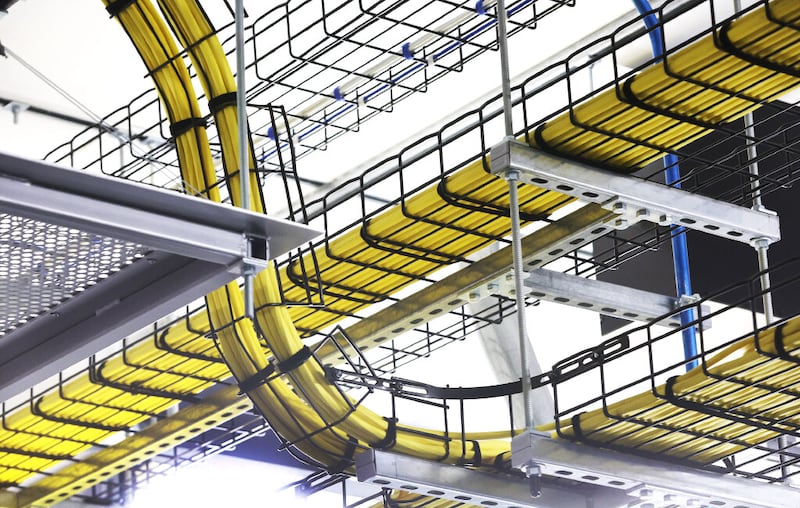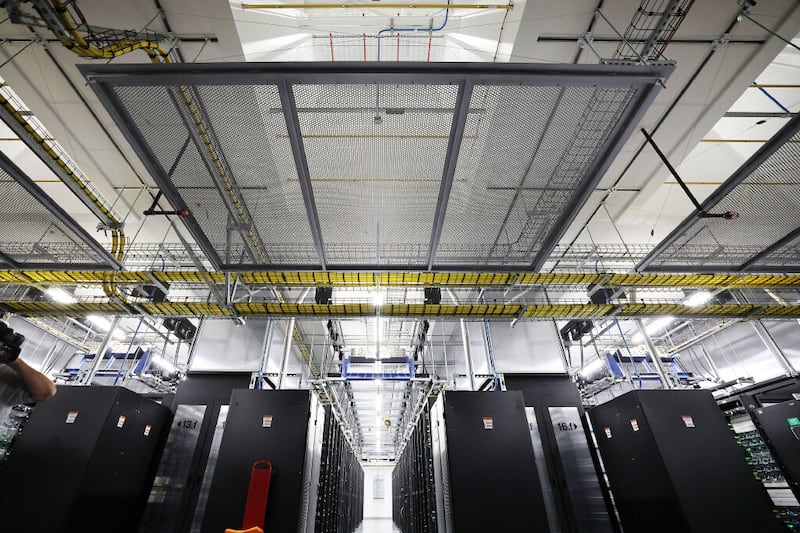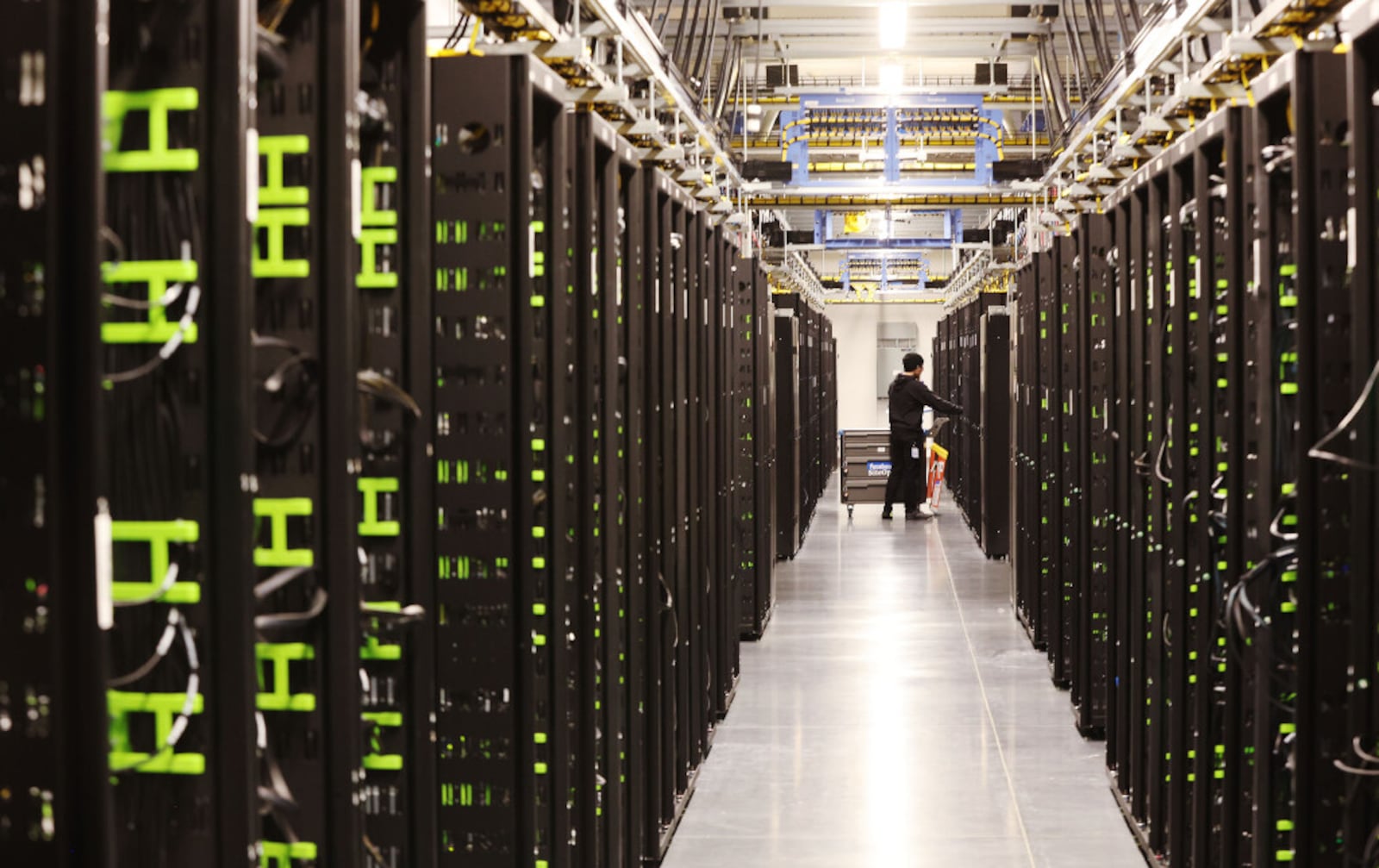This story appears in the 2024 Advisor, a publication sponsored by Colliers Utah.
As automation and AI applications become ever more present in our tech-first society, the nature of how work gets done is shifting. With the rise of remote work and the ability to put rote tasks on autopilot, it’s becoming less unnecessary for workers to be present in the office—a phenomenon leaving a significant amount of office space and other commercial real estate empty.
However, to power the future, the tech sector does need ample real estate for one vital thing: data centers. But data centers require an immense amount of power to run, which means as the demand for data centers rises, so will the demand for water and other energy sources to fuel them.
The state of Utah is seeking innovative strategies to keep up with the need for new data centers and is set to transform its commercial real estate spaces into these much-needed technological hubs. But two questions remain: What challenges stand in the way of rapidly expanding data centers across the Beehive State, and can the growth of these data centers solidify Silicon Slopes as the tech sector’s new kingpin?
Where do we get the water?
“Utah is an attractive location for data centers because of the [abundant] power that is available, and the cost of power is relatively low in relation to many locations across the U.S.,” Don Enlow, EVP at Colliers Utah, says.
Even so, data centers still require immense power to function correctly.
“To be re-developed into a data center, any empty commercial real estate must be near very robust power sources, as data centers are incredibly power hungry,” Enlow says. “Most of the recently vacated office space would not have the attributes to provide sufficient power for today’s modern data centers. In addition, data centers are so specialized and of such a large scale most vacant buildings could not be converted.”
While Utah has the unique combination of tax incentives and low humidity that makes it one of the top-tier locations for new data centers, the state is lacking something that these centers need to operate: water.
“Water use continues to be a major concern across all business segments in Utah, as Utah is the third-driest state in the nation,” Enlow explains. “As business and population continue to grow in Utah, wise and thoughtful water use becomes ever more important. The shrinkage of the Great Salt Lake has now shone a spotlight on what can happen if we are not mindful of our scarce water resources. It is a simple concept of supply and demand, and the supply seems to be coming more into question as climate conditions change.”

However, new technologies can help reduce data centers’ need for energy and water consumption. Aligned Energy, a company that offers a data center delivery model based on securing and expanding capacity as needed, is pioneering new technologies that can reduce the need for water as a source of energy.
“Aligned utilizes our patented cooling technology, which enables our data halls to use less space, power, and zero outside air and water (thanks to our closed-loop design),” said an Aligned spokesperson. “Rather than inefficiently pushing cold air into the data hall like some legacy data center designs, Aligned’s cooling technology captures and removes heat at its source, resulting in an ultra-efficient environment that dynamically adapts to customers’ IT loads.”
In fact, according to both Enlow and Aligned Energy, many data centers are turning to alternative or enhanced cooling methods to save or use no water at all.
“Data centers are also exploring ways to more efficiently recycle the water used for cooling and reducing losses due to evaporation,” Enlow says. “The source of the power can also be important to the customers of data centers, and many of these customers like to see data centers that use some of their power from renewable sources.”
Since 2013, Aligned has built data centers across the U.S., using its cooling technology to significantly reduce water consumption. Aligned has two locations in West Jordan with two more in the works. This means that its patented offering could be arriving at the perfect time, with the potential to fuel the rise in demand for new data centers.
Why data centers matter
Clearly, there are solutions on the horizon regarding energy efficiency. If they’re implemented properly and data centers in Utah can grow without major barriers, the state would be uniquely set up to provide an unparalleled offering and truly rival Silicon Valley and other tech hubs like Seattle.
“Data centers are [a] huge part of people’s everyday business and personal lives,” Enlow explains. “All things ‘internet’ are powered by data centers. With the onset of AI becoming more prevalent in the future, there will continue to be increased demand for data centers. Data centers and their functions have become synonymous with the comforts and entertainment of our daily lives.”
Aligned Energy agrees with the crucial role that data centers play in our society today: “Data centers underpin the digital world. They house the storage and computer systems that run the internet, power our businesses and keep us all connected. As long as more data is generated and we continue our reliance on digital services, the demand for data centers will continue to grow as well. Data centers will also continue their contribution to a more sustainable and connected future for the communities they are located in, creating stable, high-paying jobs, promoting secondary economic development, spurring innovation, driving demand for more renewable energy and more.”
As the demand for data centers continues to skyrocket, the transformation of commercial real estate will have to meet this demand in the most sustainable and efficient way possible.
Colliers has a specific process when it comes to using commercial real estate to this end. “Colliers’ professionals are involved with site selection and land acquisition for data centers worldwide,” Enlow says. “Colliers has a dedicated Data Center Advisory Group, in addition to a Data Center Management team.”
Aligned Energy takes a similar approach: “We [build data centers] through the standardization, scalability and sustainability of our design and solutions, sustainable and efficient technologies, and continuous innovation.”
While we are still in the very early stages of rolling out more data centers across Utah, the beginning efforts are shaping up to be very promising.


